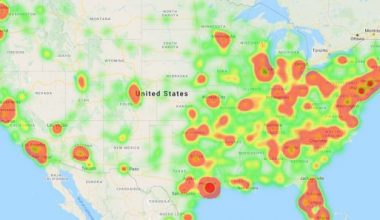Trading stocks online requires the use of technical jargon to carry out your specific plans. Whether you are a good day trader or a less frequent stock trader, you should be familiar with the term “time in force.” In the past, I’ve been asked to write a step-by-step post on how to trade with fidelity time in force stock. Buying stock can be intimidating for new investors, especially when you’re putting thousands of dollars into the market that took hundreds of hours of hard work to save. They are afraid that the money will vanish in an instant, similar to betting all of your money on black on a roulette wheel. We’re going to keep things simple today, but even seasoned investors may find a nugget or two in this post.
Understanding Time In Force
Time in force is a special instruction that is used when placing a trade to indicate how long an order will remain active before being executed or expiring. These options are beneficial for active traders because they allow them to be more specific about the time parameters. By setting time parameters, traders would have automatically canceled old and unintentional trade executions.
Unintentional transaction executions can be extremely costly, especially if they occur during volatile market conditions with quickly changing prices. Most active traders use limit orders to regulate the price they pay for a stock, which means they set a time in force option to govern how long the order is open. While day orders are the most prevalent type of order, there are many situations in which alternative order types are appropriate.
Immediate or cancel (IOC) or good for day order are two common examples of time in force options.
When to Cancel an Order Based on Time in Force
Time in Force is only applicable to Limit orders. When you make the decision that you will not pay the market price and have the desired price in mind.
When you create a limit order of any kind (Stop Limit or simply Limit), you’ll be asked when you want it to expire.
Here are two of the most common limit orders for your consideration:
#1. Time In Force GFD- Good for Day Order
Whatever price you decide, you only want it executed during that day’s market hours. If it does not reach that price on that day, it will be canceled. However, you will be able to decide what to do the following day.
#2. Time in force GTC – Good Till Canceled
This order will not be canceled overnight or anytime soon. Also, you can specify when you want to cancel it.
These are the most important things to remember, and always remember to set them correctly!
Types of Time in Force Orders
You can use time in force orders in a variety of ways in your investment strategy. You could, for example, select one of the following options:
#1. Day-only order (DAY)
This is a buy or sells order for a security that is only valid for the current trading session. So if a day order is not executed by the end of the trading day, it is automatically canceled. Day-only orders are useful if you want to trade a security at a specific price without having to keep track of its price throughout the trading day. This is also known as the time in force good for the day.
#2. Fill or kill order (FOK)
This type of order has two options: fill the entire order immediately or cancel it. So, if you trade more actively or at a higher volume, you might use this type of time in force order. Instead of buying shares of the same security at different prices, the goal of this type of order is to help you complete a larger trade at a specific price point.
#3. Good until canceled order (GTC)
This type of order allows you to instruct your broker to buy or sell assets at a predetermined price until the order expires. Your brokerage may give you a window of 30 to 90 days in which to execute or cancel these orders. This type of time in force order is useful if you want to wait for a specific price on security before executing a trade. If the security never reaches that price, you can either cancel the order or let it expire.
#4. Immediate or cancel order (IOC)
These are similar to fill or kill orders, but with one important distinction. If the entire order cannot be filled immediately with fill or kill, the order must be canceled. When you place an immediate or cancel an order, only the portion of the order that can be filled right away is filled. Any remaining shares would be canceled at that point.
#5. Good until date order (GTD)
This type of order allows you to specify a specific date for executing it or allow it to expire. In comparison to good until canceled order, this gives you a little more certainty about when the order will end. Hence, if you day trade stocks through an online brokerage, your broker may limit the types of time in force orders you can place.
How to Make Use of Time in Force Orders
So, to manage your investment strategy, stock time in force orders can be combined with other types of orders. You can, for example, use them with: Orders placed on the market, Orders must be limited, Orders to halt.
#1. Market Order
A market order is a buy or sells order for a security at the best available price. Most market orders are day-only orders because the goal is to execute the trade as quickly as possible at the best price. So, if you day trade in a brokerage account, your default time in force order sets may be day-only.
#2. Limit Order
Limit orders are similar to buy or sell orders, but with one difference: in order for the trade to be executed, it must be at or below a specific limit price. Typically, buy limit orders instruct your broker to purchase a security at or below the current market price. Also, sell limit orders instruct your broker to sell securities at or above market value. A fill or kill order is a type of limit order because you are instructing your broker to either fill the order immediately at a predetermined price or cancel it entirely.
#3. Stop Orders
Stop orders allow you to instruct your broker to buy or sell securities once they reach a certain price. It can be used in conjunction with good until date orders or other time-in force orders to manage price volatility.
Fidelity Time in Force
So, here’s a step-by-step guide to buying a stock, complete with screenshots from Fidelity, the brokerage I use (the process is similar at Vanguard and Schwab).
So, if you get stuck along the way in your time in force trade, click the “Help Me Trade” button in the top left corner, and Fidelity will walk you through the steps.
Step 1: Selecting a stock to purchase
We’ll assume you’ve already opened a Fidelity taxable brokerage account and deposited funds into it.
However, in taxable accounts, I strongly advise investing in index exchange-traded funds (ETFs), which are the stock equivalent of index funds. In a taxable account, they are more tax-efficient than Fidelity’s mutual fund equivalent. If you’re following my simple guide to building a three-fund or similar index fund portfolio at Fidelity, these are the ETF ticker symbols I prefer:
| Asset Class | Ticker | Expense Ratio |
| S&P 500 | VOO | 0.03% |
| Total Stock Market | VTI | 0.03% |
| U.S. Bonds | BND | 0.04% |
| International Stocks | VXUS | 0.08% |
| International Bonds | BNDX | 0.08% |
| Real Estate | FREL | 0.08% |
Step 2: Enter order
Sign in to your Fidelity account and click the Trade button in the top left corner to begin the time in the force trade process. Hence, the trading screen should appear as follows:
When can an order be entered?
Daily business hours are 9:30 a.m. to 4:00 p.m. The first and last hours of trading are the most volatile for the markets. When the market is less volatile, I prefer to buy ETFs. You must trade during normal market hours; as trading outside of market hours is not recommended.
- Form of Transaction
- Select stocks or exchange-traded funds (ETFs).
- The Symbol
Enter the ticker symbol of the ETF that you want to buy. In this scenario, we’ll go with IVV (iShares S&P 500 ETF).
- Taking Action
- You want to buy stock.
- the quantity
Enter the number of shares you wish to buy. Since you can only buy whole numbers of shares, divide the amount of money you want to spend by the current stock price. Also, there will be some capital left over that will not be spent.
- Order Type
- Business orders and cap orders are your two key options.
Market vs. Limit Orders:
I strongly advise new investors to use market orders. I’ve used every form of order there is, and I personally use market orders whenever I need to buy or sell an index ETF.
So, for the ETFs you will be selling, the bid-ask spread (the difference in price between what you can buy and sell a stock) is usually a penny or two per share. Market orders are executed immediately, so you won’t have to wait to see if your trade was effective. In personal finance, I value simplicity, and this is one way to keep investing easy.
- Fidelity Stock Time In Force Option
You can select “Day” for fidelity stock time in force option, but if you use market orders, your trade will be executed almost instantly.
After we complete it, our order should look like this:
Step 3: Pick Order Preview.
You’ll see a preview of your order, which will include the current price of the stock or ETF, the number of shares you want to purchase, and the approximate order value.
Congratulations! You’ve made your first transaction. You can access the order confirmation by going to the Activity / Confirmation tab.
Have a question?
So if you have any questions, please contact Fidelity Customer Service and they will walk you through the steps for the time in force stocks. Be certain that you actually execute the trade and that they do not do it for you over the internet. Orders put over the phone can incur a substantial commission charge.
So, don’t be intimidated by online trading. It’s really not that difficult, and hopefully, I’ve been able to walk you through it step by step.
Regardless of which time in-force orders you decide to use, the purpose is more or less the same: allowing you to monitor the markets, rather than requiring you to focus on your trading activity. By setting specific end dates for trades, you don’t have to worry about trades going through outside of the particular time frames you set. This is helpful if you’re actively trading and tracking the movements of a wide variety of securities each day.
Investing Recommendations
Consider working with a financial planner to decide if time-in-force orders are suitable for your investment plan. If you don’t already have a financial planner, it doesn’t have to be complicated to find one.
So, if you don’t already have an online brokerage account, you should think about getting one. When comparing online brokerages, consider the types of investments available, the commissions or other fees you’ll have to pay to trade, and the account minimums needed. If you want to use time in force, you should also try to see what options are open.
What Does Fidelity Mean by Time in the Force?
A restriction on an order’s execution’s duration of validity. This restriction necessitates that a broker places a bid or offer right away at the limit price you designate. Any or all of the sequence can be carried out. Any order component that is not promptly fulfilled is canceled.
What Is the Stock Sale Time Period in Effect?
The amount of time an order will be in effect before being executed by your broker or expiring is known as the time in force. When buying and selling securities, it might give you control over the timing of the trading orders you place.
What Occurs if You Sell After Business Hours?
There is less of a market for any stock being traded during after-hours trading. As a result, there may be more price fluctuation and less liquidity, which could raise the risk.
How Does Trading Work After Hours?
You need to sign into your brokerage account and choose the stock you wish to buy in order to carry out an after-hours deal. After that, you place a limit order much like you would during a regular trading session. After-hours trading may incur additional fees from your broker, but many don’t so make sure to inquire.
What Value Does Real-Time Have?
By responding to the most recent, freshest insights, also enables organizations to be proactive in their client retention efforts and enhance customer experience. However, this does not imply that older marketing metrics like page views and click-through rates are no longer important.
Time in Force FAQs
What is time in force day vs close?
If you place a day order after the close of trading, the order is good until the close of the next trading day. If you place a limit order with a time-in-force of the day during an extended hours session, the order is good until the session ends.
What is time in force Robinhood?
Time-in-Force-Stock. You can set a time-in-force to indicate how long your market, limit, or stop order will remain active. The time-in-force options include Good-for-Day (GFD) and Good-til-Canceled (GTC)
What Does It Mean time in force day?
Time In Force is the amount of time spent during the execution of an order before it expires. It also refers to a special directive implemented by traders or investors when placing a trade for stocks or other financial instruments.






